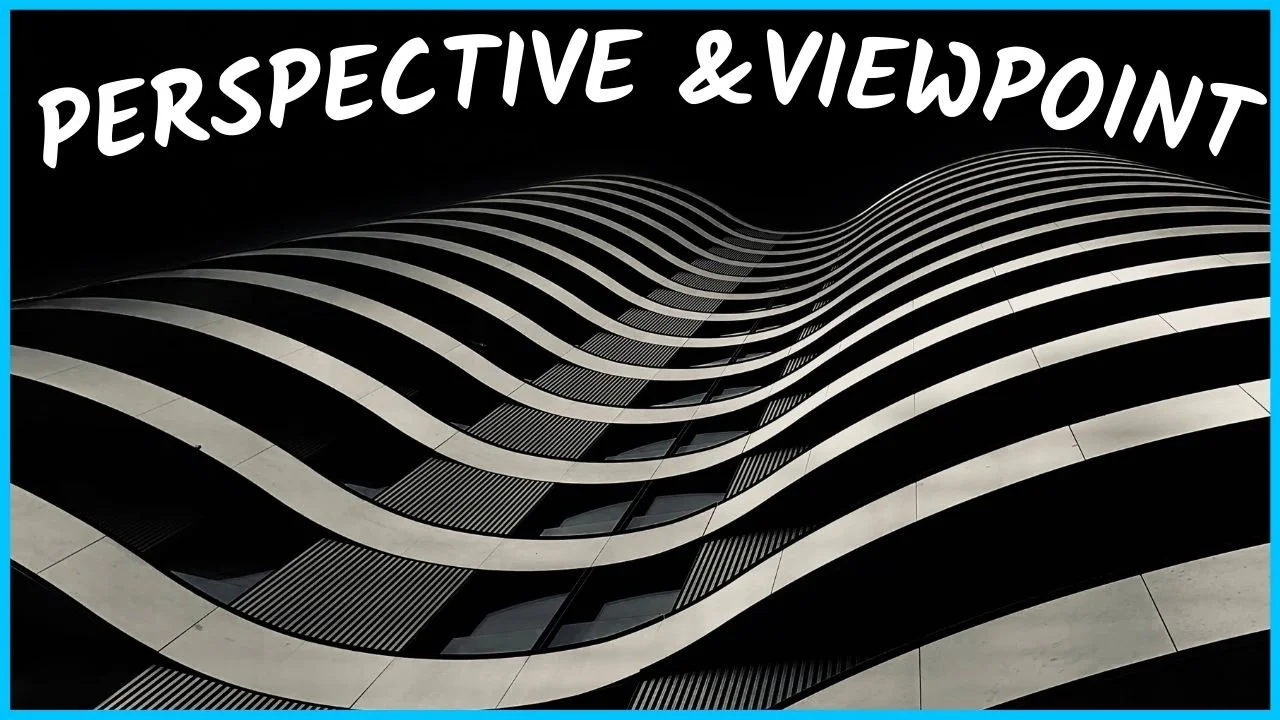Change Viewpoint & Perspective to Instantly Improve Your Photos
Related articles:
Improve Photo Composition by Stacking Techniques
Add energy to photos using the Dutch angle composition technique
The most exciting aspect of photography is that there's always something new you can learn. When you use your smartphone for photography, you have the added advantage of being able to access my tutorials to improve your skills and practice them on the spot.
Today, I will be doing a deep dive into how you can use two composition techniques: viewpoint and perspective. Continue reading to learn everything you need to get started using viewpoint and perspective to enhance your photography and improve your photos.
All About Viewpoint
What is a viewpoint in terms of compositional technique?
When it comes to the composition, viewpoint refers to the location from which you take a photograph. By extension, the photographer's viewpoint is also the viewpoint of whoever is observing the picture. To change your viewpoint, all you have to do is change the position you're in when you take a photograph.
How does it work?
You dictate the viewpoint of your photography. So, you decide the role that it plays in your work. Experiment with different viewpoints to create unique viewpoints and even develop a photography style.
Should you use viewpoint in your photography?
There is a wide variety of benefits to employing viewpoint as a compositional element in your photography. The viewpoint you choose can increase or decrease the emphasis on your subject, adding dimension and complexity to your image.
Remember, when you change your viewpoint, you're changing how the subject, foreground, and background are being captured. Consequently, you change your (and the audience's) vantage point when you change your viewpoint.
Are there different types of viewpoints?
Believe it or not, there is an infinite number of different viewpoints that you can try out the next time you're taking photos. Once you have your subject in focus, try stepping to the left or right, crouching or sitting. If you are using autofocus, move your camera closer or further away from your subject. Every movement you make with your camera changes your viewpoint.
What are some examples of different viewpoints in photography?
While the most common viewpoint you're likely to come across in photographs is an eye-level view, deviating from the norm and adopting different viewpoints can dramatically alter a photo and its impact.
For example, imagine you're taking a photo of a piece of fruit on a tree or shrub. Taking your first photo from an eye-level view, you may be able to observe some of the tree and multiple pieces of fruit, but perhaps not the tree's trunk or anything in the background.
Additionally, you could take a vantage point from a sturdy branch in the tree and take a close-up view of a single piece of fruit to create an absurdist feeling that you otherwise might not have seen.
Stronger Photo Composition: 4-Step System - Click/Tap to Learn More
All About Perspective
What is a perspective compositional technique?
The world is 3-D, and we perceive it as such because humans have stereoscopic vision. However, most camera lenses do not. So, most photographers who use their smartphones to take photos will result in two-dimensional photographs. Anytime you take an image of something 3-D, you're transitioning that subject to 2-D, and as a result, creating perspective.
Should you use perspective in your photography?
Like viewpoint, there are quite a few benefits to utilising perspective as a compositional technique in your photography. You can change the perspective of your photograph to make your subject appear larger or smaller, alter the way lines appear, and much, much more.
Are there different types of perspectives?
We've discussed how changing your location can change your viewpoint, but did you know that you can change the perspective of a photograph simply by adjusting the angle? It's true! Altering the angle you hold your camera at alters the perspective of a photograph, creating new and engaging compositions that can completely change your final photo.
What are some examples of different perspectives in photography?
There are many different perspectives you can try out the next time you're out and about taking photos. Some of the tried and true, more popular perspectives you may want to test out are linear perspective, rectilinear perspective, overlap perspective, forced perspective, and distorted perspective.
As an exercise, try lying on the ground to take a picture of your next subject. Shoot your camera at an upward angle to play around with distance and size. Then, take a photo of the same subject from the same location but with a downward-facing angle to see how the perspective shifts and changes.
What's the difference between viewpoint and perspective in photography?
Although both perspective and viewpoint are critical elements of the composition of a photograph, they are two distinct technical aspects. The viewpoint of a photograph refers to the physical location a photo is seen or taken. The perspective of a photograph refers to the sense of depth and spatial relationships within the photograph itself.
Final Thoughts
Now that we've gone over everything there is to know about perspective and viewpoint in photography. You're ready to put your knowledge to the test! The next time you're out taking photos, keep your viewpoint and perspective in mind and don't be afraid to have fun. You may just find that even the smallest of changes can have a monumental impact. If you enjoyed this article, you might also be interested in one of my video tutorials on other composition techniques and everything else you need to know before your next shoot.
P.S. Interested to learn how I created the black sky in that photo at the top of the article? Check out how in this YouTube video.
More articles:
Mastering the Art of Visual Tension in Smartphone Photography
Change Viewpoint & Perspective to Instantly Improve Your Photos
30 Tips to Create Stunning Silhouette Photos on Your Smartphone
Add Energy To Photos Using the Dutch Angle Composition Technique
Capture A Subject 9 Different Ways To Discover Your Creativity
Use the Snapseed Expand Tool to Add Extra Space in Your Image to Crop
The Rule of Thirds – Grid Lines on Your Smartphone Explained
Street Art Photography Tips for your iPhone and Android Smartphone


